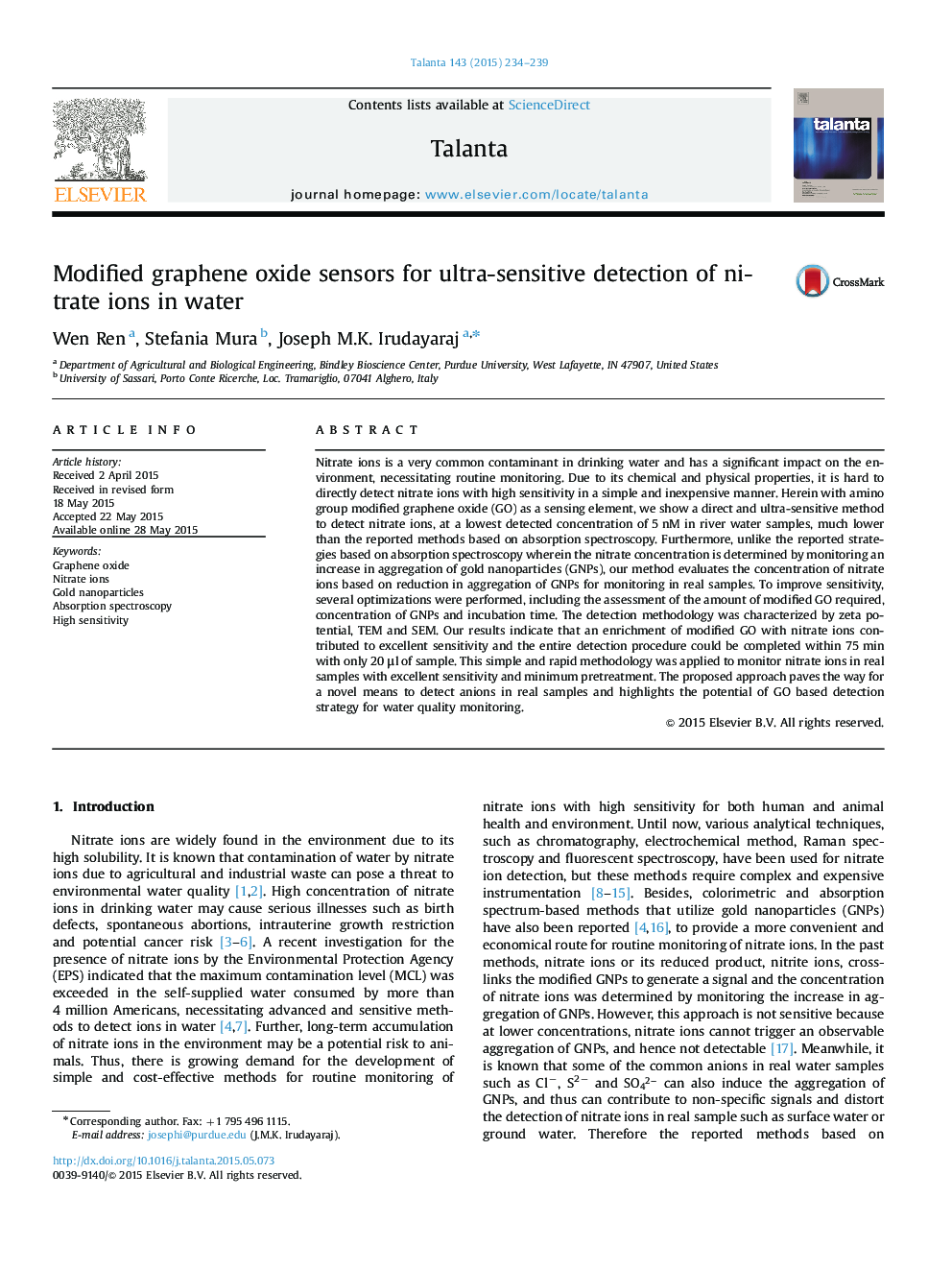| Article ID | Journal | Published Year | Pages | File Type |
|---|---|---|---|---|
| 1241880 | Talanta | 2015 | 6 Pages |
•A sensing strategy for NO3- is demonstrated based on GO and GNPs.•Enrichment of No3-No3- on amino functionalized GO-GNP sensors improve sensitivity.•Very low concentration of No3-No3- is detected compared to other sensor techniques.•The technique proposed is rapid and simple requiring minimum pretreatment.•Opportunity for multiplex detection of ions in water exists.
Nitrate ions is a very common contaminant in drinking water and has a significant impact on the environment, necessitating routine monitoring. Due to its chemical and physical properties, it is hard to directly detect nitrate ions with high sensitivity in a simple and inexpensive manner. Herein with amino group modified graphene oxide (GO) as a sensing element, we show a direct and ultra-sensitive method to detect nitrate ions, at a lowest detected concentration of 5 nM in river water samples, much lower than the reported methods based on absorption spectroscopy. Furthermore, unlike the reported strategies based on absorption spectroscopy wherein the nitrate concentration is determined by monitoring an increase in aggregation of gold nanoparticles (GNPs), our method evaluates the concentration of nitrate ions based on reduction in aggregation of GNPs for monitoring in real samples. To improve sensitivity, several optimizations were performed, including the assessment of the amount of modified GO required, concentration of GNPs and incubation time. The detection methodology was characterized by zeta potential, TEM and SEM. Our results indicate that an enrichment of modified GO with nitrate ions contributed to excellent sensitivity and the entire detection procedure could be completed within 75 min with only 20 μl of sample. This simple and rapid methodology was applied to monitor nitrate ions in real samples with excellent sensitivity and minimum pretreatment. The proposed approach paves the way for a novel means to detect anions in real samples and highlights the potential of GO based detection strategy for water quality monitoring.
Graphical abstractFigure optionsDownload full-size imageDownload as PowerPoint slide
